Špela Petrič and her plant-human embryos
Published 31 October 2016 by Ewen Chardronnet
The Slovenian bio-artist Špela Petrič offered a performance with hormone extractions on October 21 at the Forum Camp of the Plateforme C fablab in Nantes. She also presented her “plant-human monsters”, a project matured during a residence at the Roscoff biological Station in Brittany.
Nantes, special envoy
Špela Petrič, 36, is a figure of the new generation of bio-artists, emancipated from the weight of her predecessors thanks to the DIY bio-art and open source Hackteria network. Of Slovenian origin, the 2014 laureate of the Bio Art and Design Award lives in Amsterdam where she works at the wetlab of the Waag Society. Her project Ectogenesis: Plant-Human Monsters, exhibited in Amsterdam, lead her to (pro)create plant-human entities through in vitro conception and hormonal alteration. Plant-human fetuses that she calls out of love her monsters. “I wanted to conceive and mother a trans-plant, to conjoin the gentle green alien,” she says.
The project took shape at the Roscoff biological Station, in the Finistère region, in April 2016, where Špela Petrič was received in research residence via the Artlabo program from the French association Ping (of which the author of these lines is the program coordinator). Object of her research: the impact of human hormones on the development of sea urchin larvae. A way to better understand the effect of endogenous hormones and industrial endocrine disruptors on the animal world and the gestation cycles.
2016 artist residency at the Roscoff marine biological Station, documentary from Vincent Pouplard:
From October 15-23 in Nantes, at the Forum Camp of Ping association, an “exploration of the change of era” through scientific, artistic, citizen and technological prisms, she proposed a workshop to carry out extractions of hormones in human urine and xeno-hormones in plastic with the collective Aliens in Green. Toxicity issues are part of her work, but as the holder of a dissertation in biochemistry says, she did not seek to obtain a master’s degree in art to “put herself at the service of scientific communication.” Beyond her concern for the environment, she also wants to touch the sublime part of the living. The research in Roscoff was hence a phase of a more “phyto-centered” (focused on plants) project, according to the words of the philosopher Michael Marder who inspired her a lot.
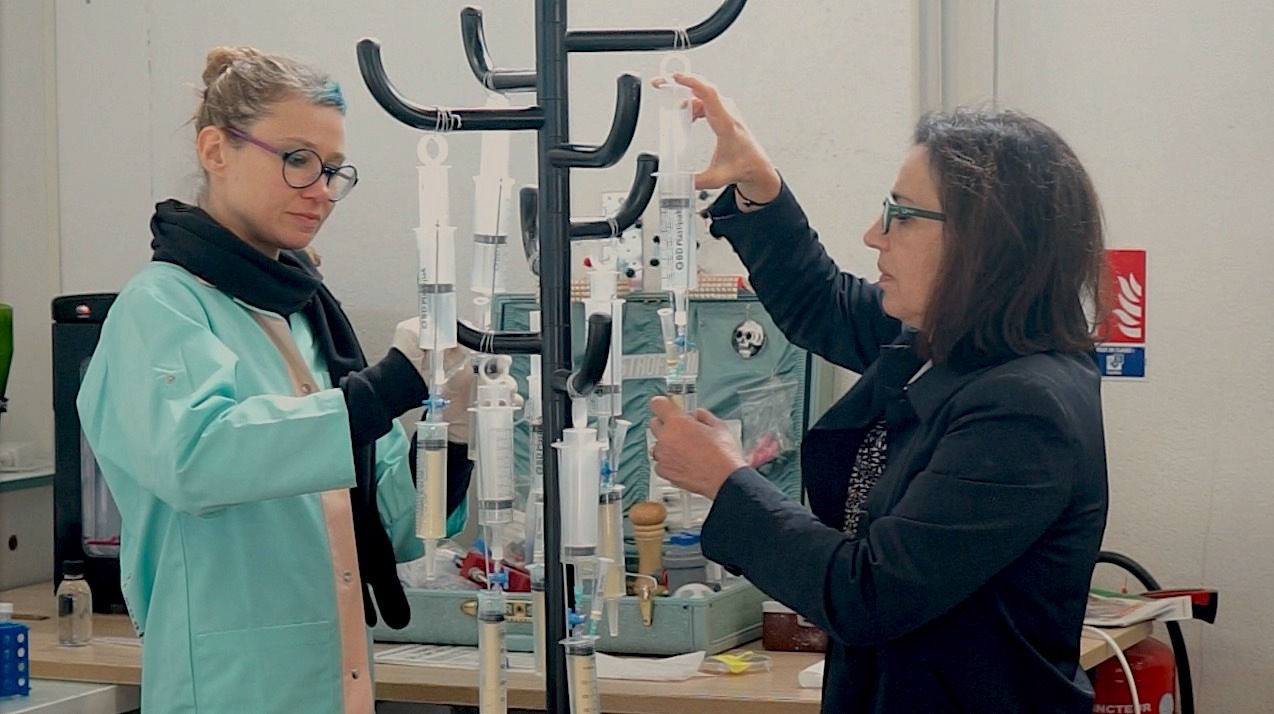
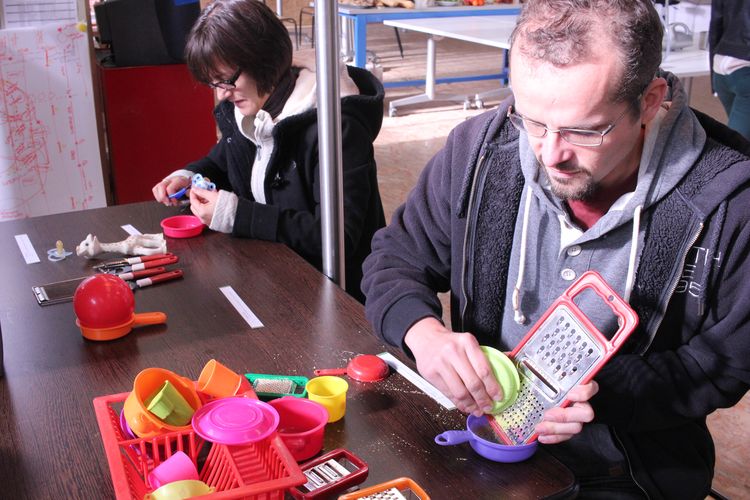
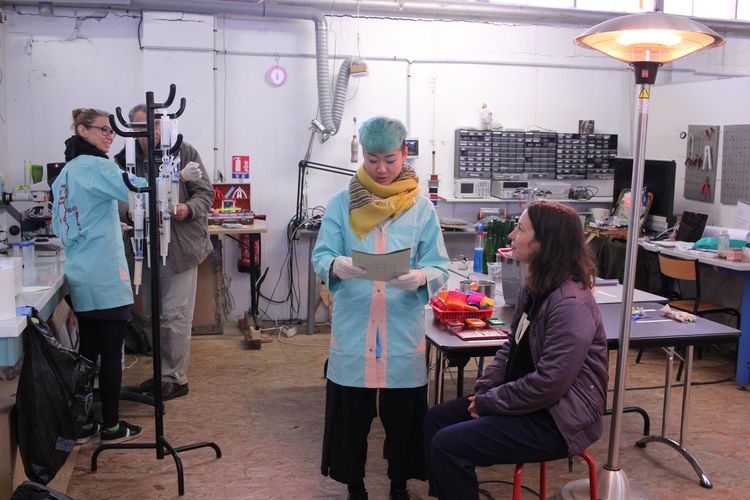
The troubling oddness of the vegetable
Špela Petrič is from the generation that is not that impressed by Eduardo Kac’s “transgenic” fluorescent rabbit that had its effect in 2000. She prefers to point out that “animals are often recognized as companions, but plants traditionally delimit the horizon of otherness. However, recent endeavors in plant biology, philosophy and bio-semiotics have been systematically deconstructing this notion.”
With Ectogenesis (ectogenesis is the gestation in an artificial womb), Petrič wanted to leave aside blood kinship and genetic lineage “to explore the subtler aspects of radical intermingling and jamming of categories,” relations between plants and human hormones. She chose a famous plant that grows in Europe and Asia, the weedy thale cress or Arabidopsis thaliana, a favorite organism for vegetable research, evolution, genetics and fundamental research.
Weedy thale cress has been a biological model since 1998 but has a century-old history regarding its links with research. Its small size, its quick life cycle (six weeks from seed to seed), its resistance and its capacity to self-pollinate are its assets. And its relatively small genome (157 million basic pairs, spread on five pairs of chromosomes) was the first plant genome to be totally sequenced in 2000.
Špela Petrič must have special empathy for this plant, and by using it, wanted to “rediscover their common past, understand their precarious future, see herself in it.” With Ectogenesis, she is looking to show the fragile position that is the “post-anthropocentric crisis of the self, an attempt to perceive herself as a fragmented, porous subjectivity” and “pursuing an artistic adjunct to the Lacanian mirror stage.”
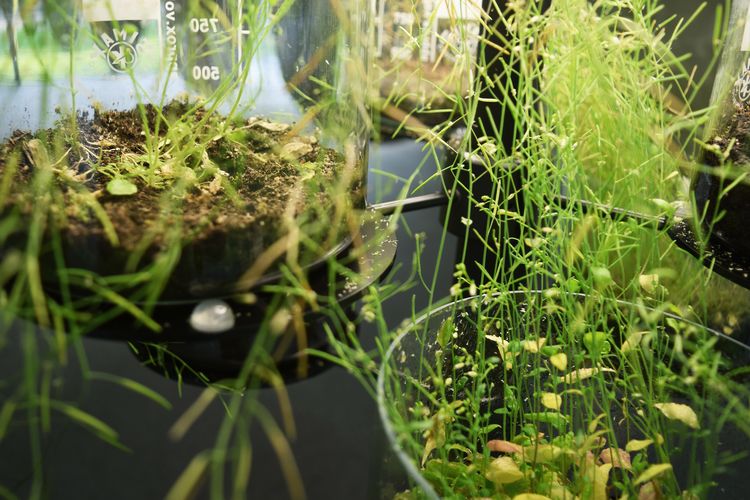
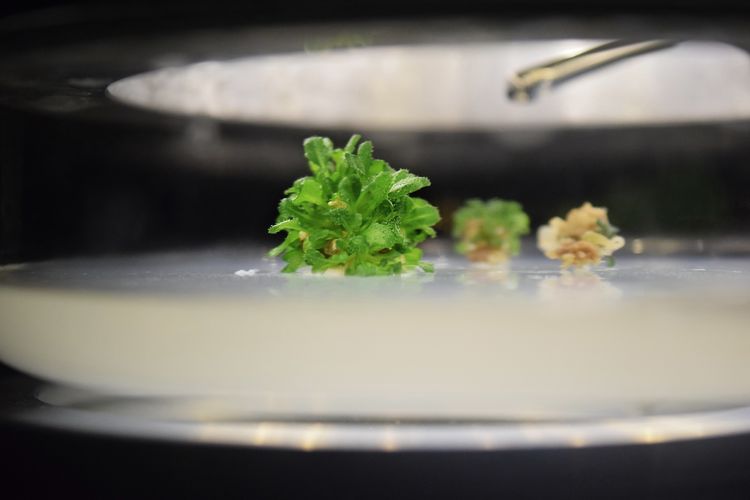
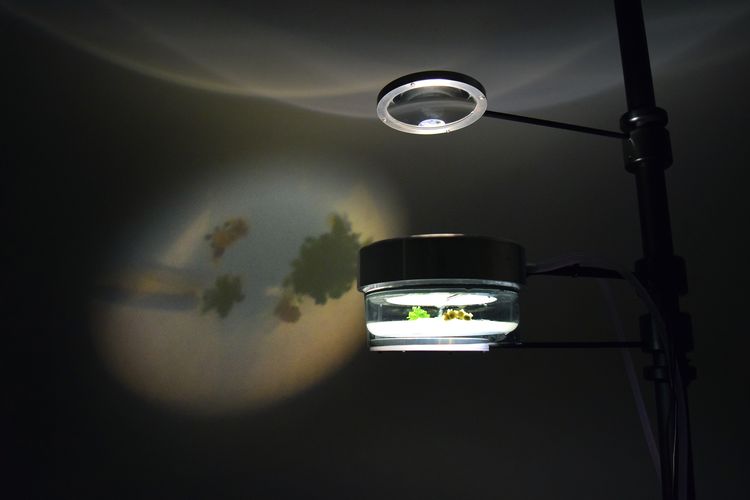
Speaking with hormones and conceiving hopeful monsters
By focusing on plants, Špela Petrič says she is sometimes discouraged when she notices she hasn’t chosen a sensationalist artistic field…Yet 2016 is the year of the International Monsanto Tribunal in the Hague and the concentration of monsters of the agrochemical and petrochemical industries (Monsanto-Bayer, Syngenta-Chemchina, Dow-Dupont), of the phytosanitary industry… It seems more than appropriate to question phyto-engineering…
To generate her “hopeful monsters” plants, a bit of embryonic tissue is stolen from the weedy thale cress (Arabidopsis thaliana) and submitted to Špela Petrič’s care, compassion, and commitment. Biotechnological protocols and science allow her to nurture the tissue into a myriad of plant embryos, conceived not in a seed but an artificial womb, the incubator. She extracts steroids from her urine to assist the embryo development, which speaks to them of her presence, in response to which they alter their epigenetic patterns and construct a specific body morphology.
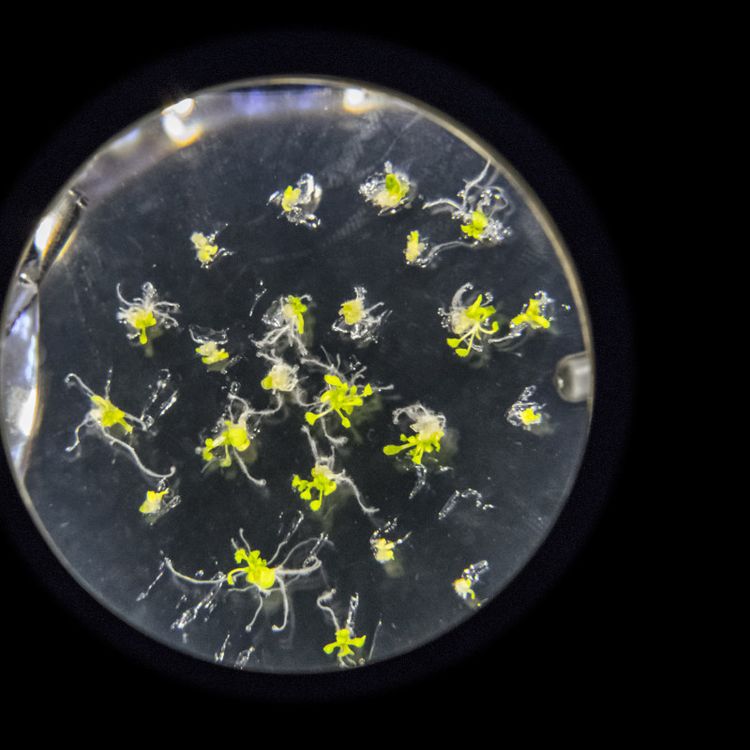
Ectogenesis opens the door for the magic of long distance cellular communication between the vegetable kingdom and the animal kingdom. “Hormones are primordial messenger molecules, stemming from a common evolutionary parent of plants, animals and microbes. Their nature can be considered dual: one of materiality, the chemical structure conferring their ability to interact with other molecules such as receptors; the other semiotic, context dependent, fluctuating, adapting, involved in a process of meaning-making. They are at the heart of an openness to be affected by others, and a material access to the others’ worlds,” says the bio-artist.
This desire to merge with plants, Špela Petrič has already expressed it in the Humalga project (2012-2013), co-produced with Robertina Šebjanič, also an Artlabo resident in Roscoff, that speculated on algae-humans based on the fact that symbiotic algae-animals exist (Roscoff worm, coral, eastern emerald elysia, sea slug, etc.). With Plant Sex Consultancy (2014), she imagined and produced with designers sex toys for plants. With Skotopoiesis (formed by darkness, 2015), she tested her body in a long performance aiming to show that her shadow could have an impact on the growth of plants.
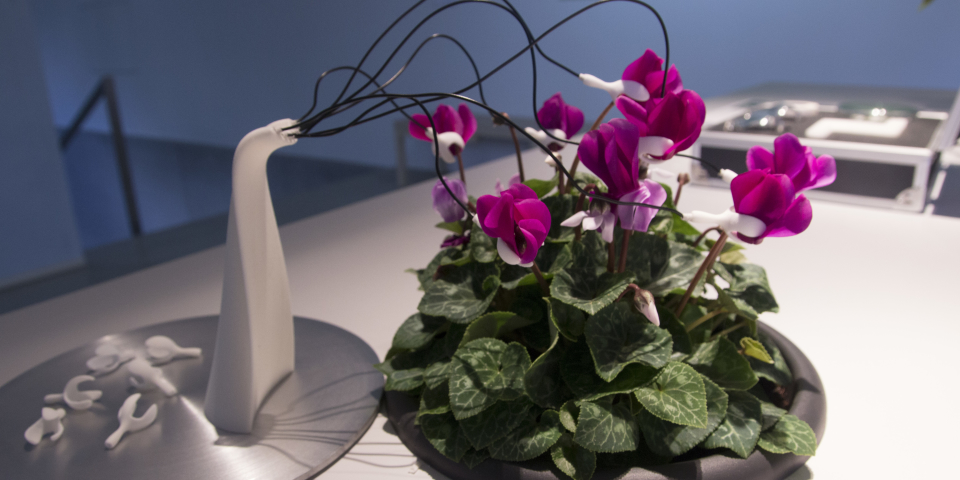
With Ectogenesis, Špela Petrič encourages us to see in her inter-species embryos, her tiny plant-monsters, that come into being from an impossible love, with intense labor and a yearning of plant parenthood, emerge in a time of environmental, political and social crisis as beings of permeability, harbingers of affective intra-agential action. Making kin with plants, caring for us, hopeful monsters. The American philosopher and zoologist Donna Haraway said “make kin, not babies!” Špela Petrič produces kin and babies with plants.
For more information on Špela Petrič, on the Artlabo residence and the Forum Camp
Špela Petrič is exhibiting “Voyager / Non-Human Agents” at the Gamerz festival in Aix-en-Provence (South of France) from November 4-13, 2016.
